Abstract
Six pigeons were trained on concurrent variable-interval schedules in which responding on fixed-interval schedules was required to give access to the alternate schedule. Responding on the concurrent schedules was not allowed, after changing over had commenced, until the changeover schedule had been completed. In Parts 1 to 3 of the experiment, the changeover fixed-interval schedules were equal and were 0 s, 10 s, and 20 s, respectively. In each part, the relative frequency of reinforcement obtained on the concurrent schedules was varied over at least five conditions. In Part 4, the concurrent schedules were equal, and one changeover fixed-interval schedule was twice the other. Under these conditions, the absolute sizes of the changeover schedules were varied. Increasing the changeover requirement from 0 s to 10 s (Parts 1 and 2) resulted in increases in the sensitivity of behavior allocation to reinforcers obtained, but no further increase was obtained when the changeover schedules were increased to 20 s (Part 3). In Part 4, performance was biased towards the concurrent schedule that took less time to enter. These results are consistent with a subtractive punishment model of travel in which the degree of punishment is measured by the number of reinforcers apparently lost from a schedule when the subject changes to that schedule. Absolute times spent on the main keys could be accurately described by a previous model of changeover performance.
Keywords: choice, changeovers, concurrent schedules, overmatching, punishment model, pecking, pigeons
Full text
PDF
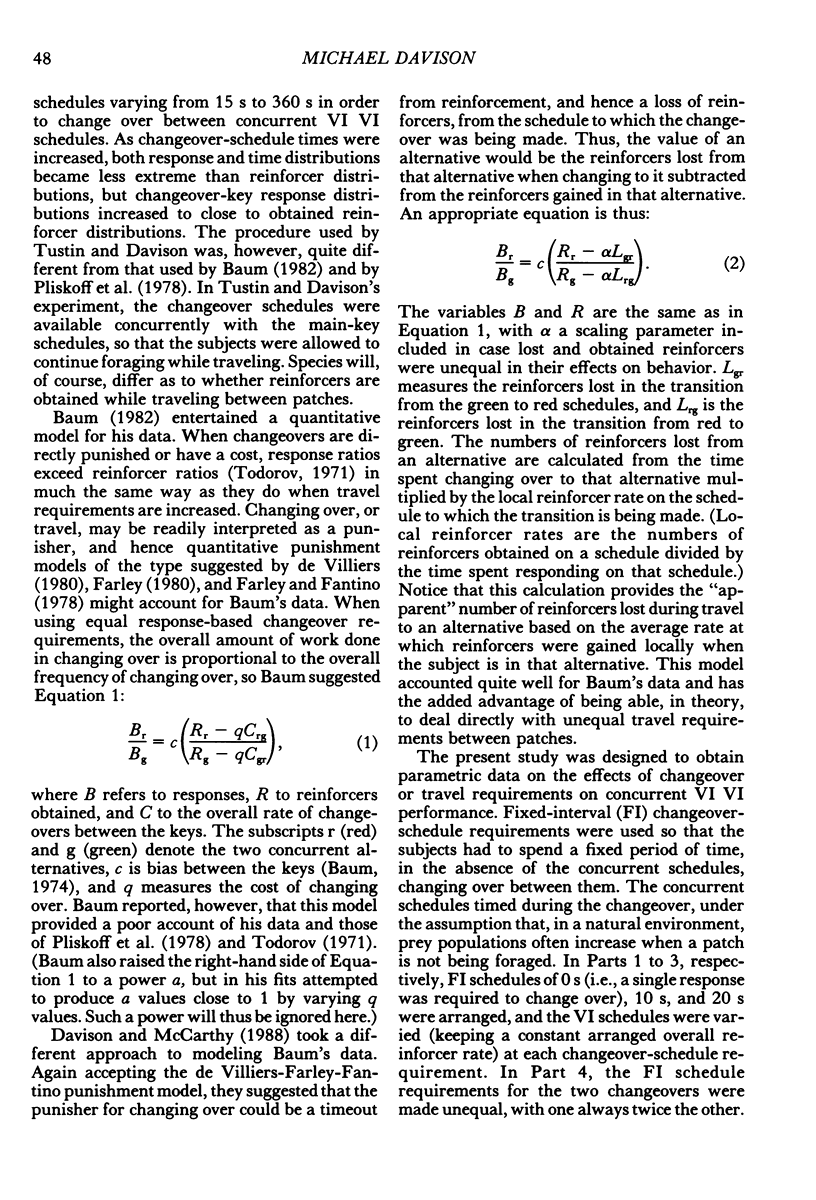
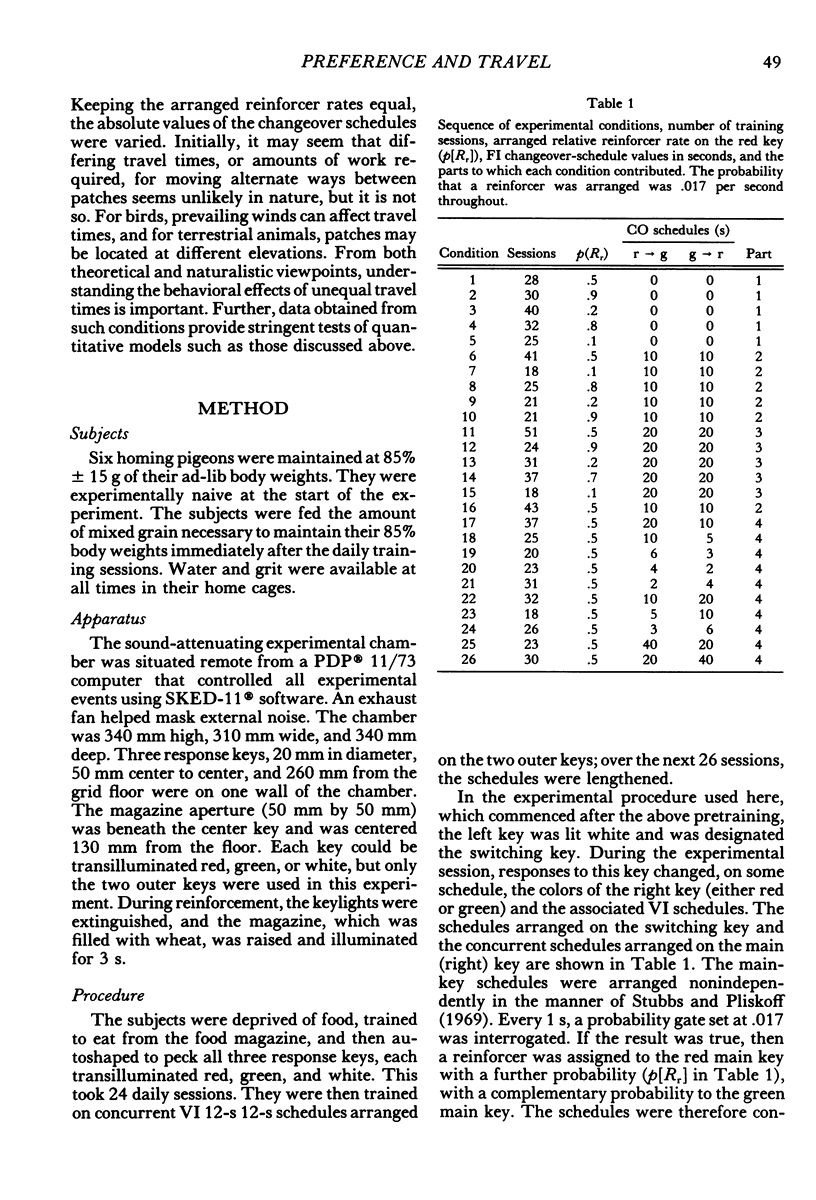

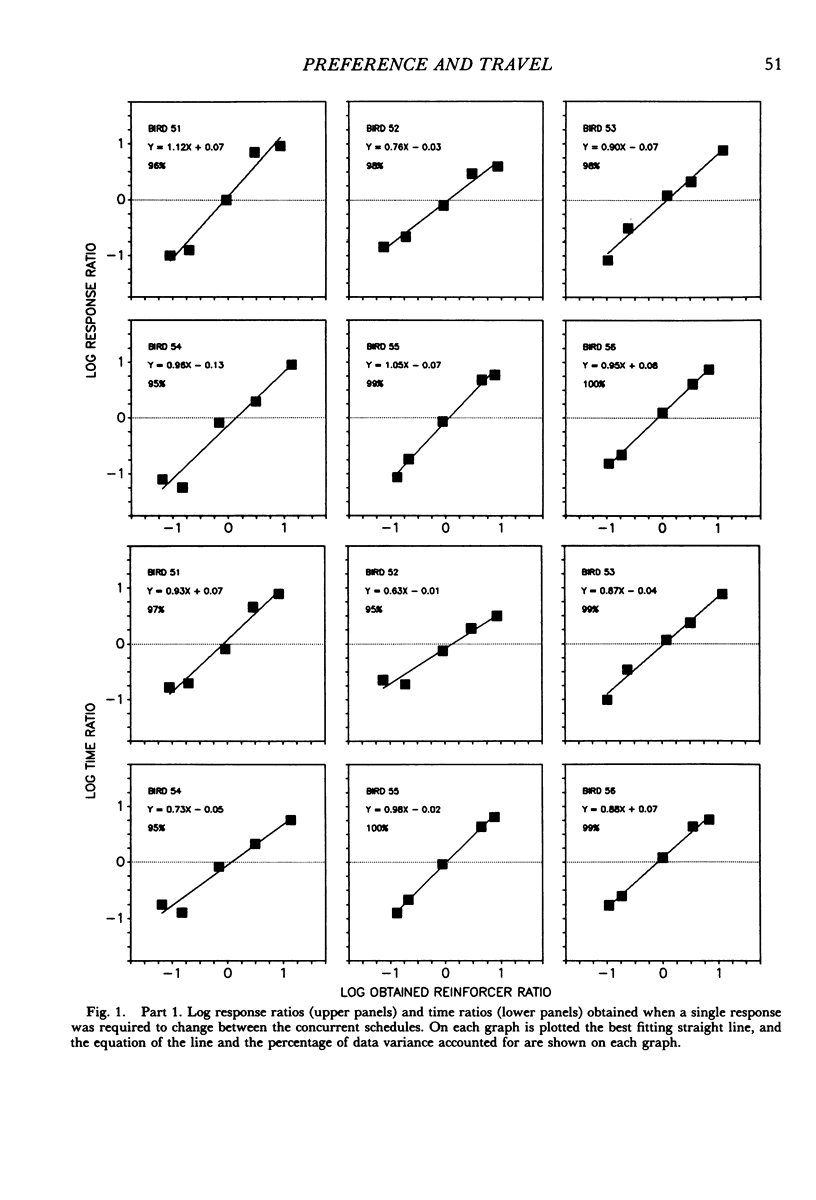
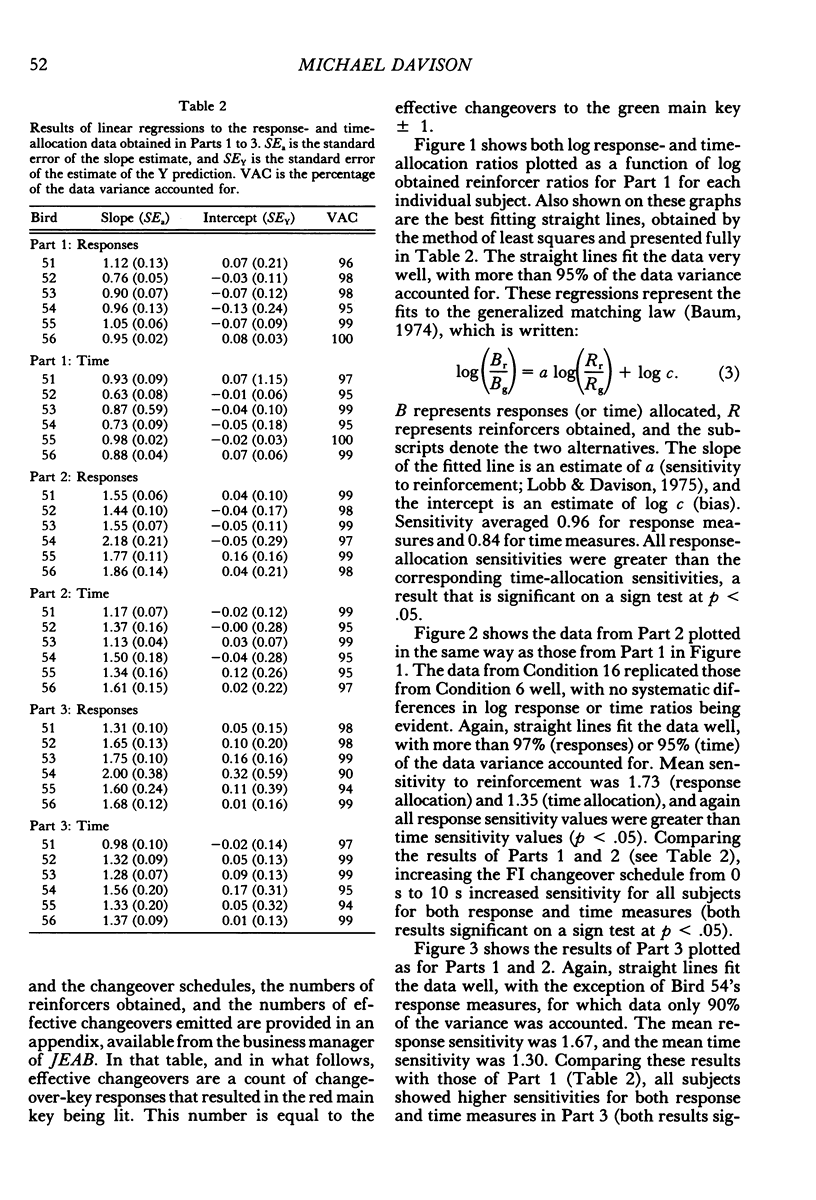
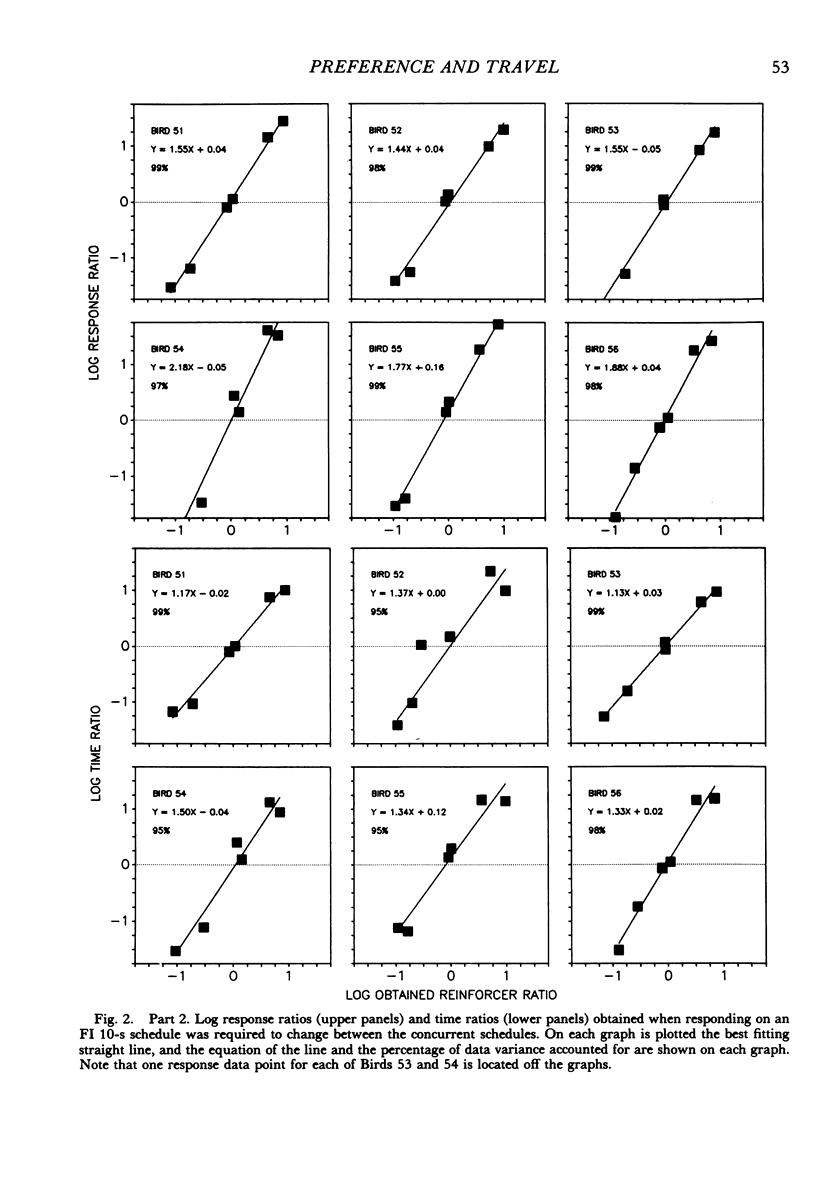

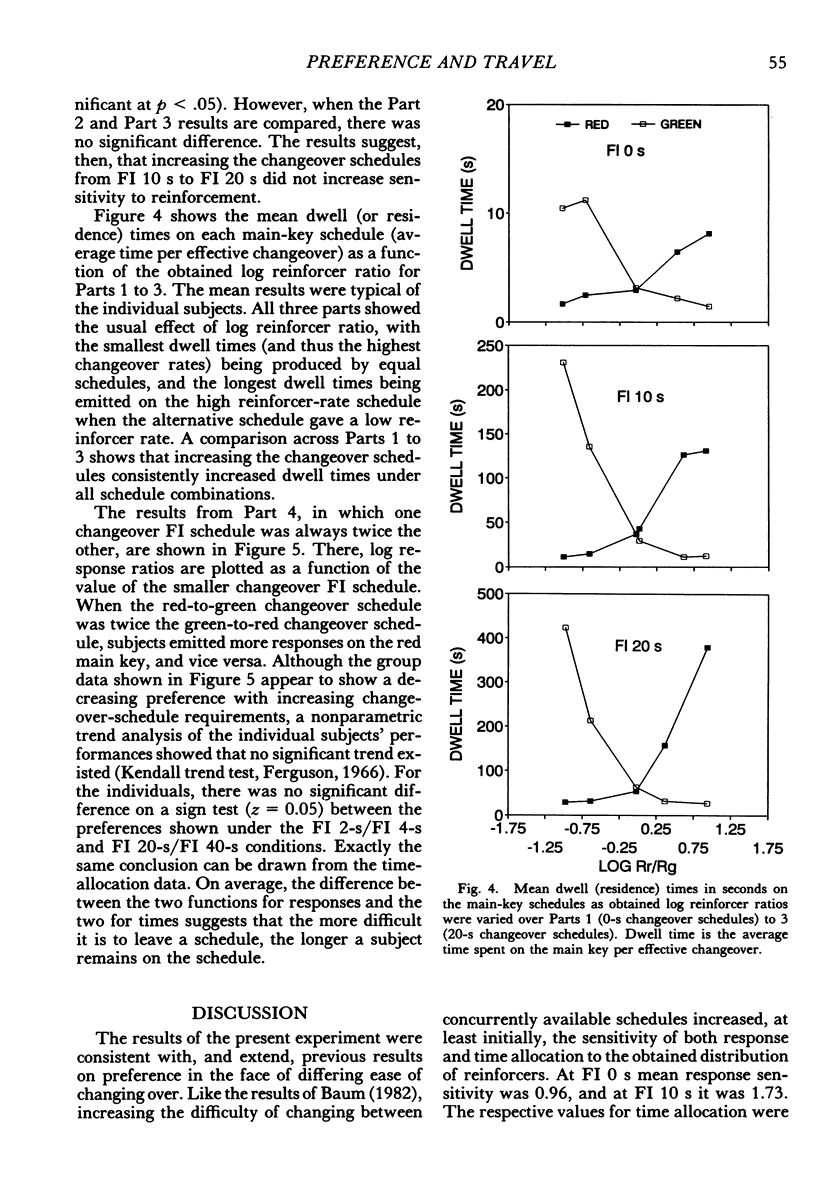
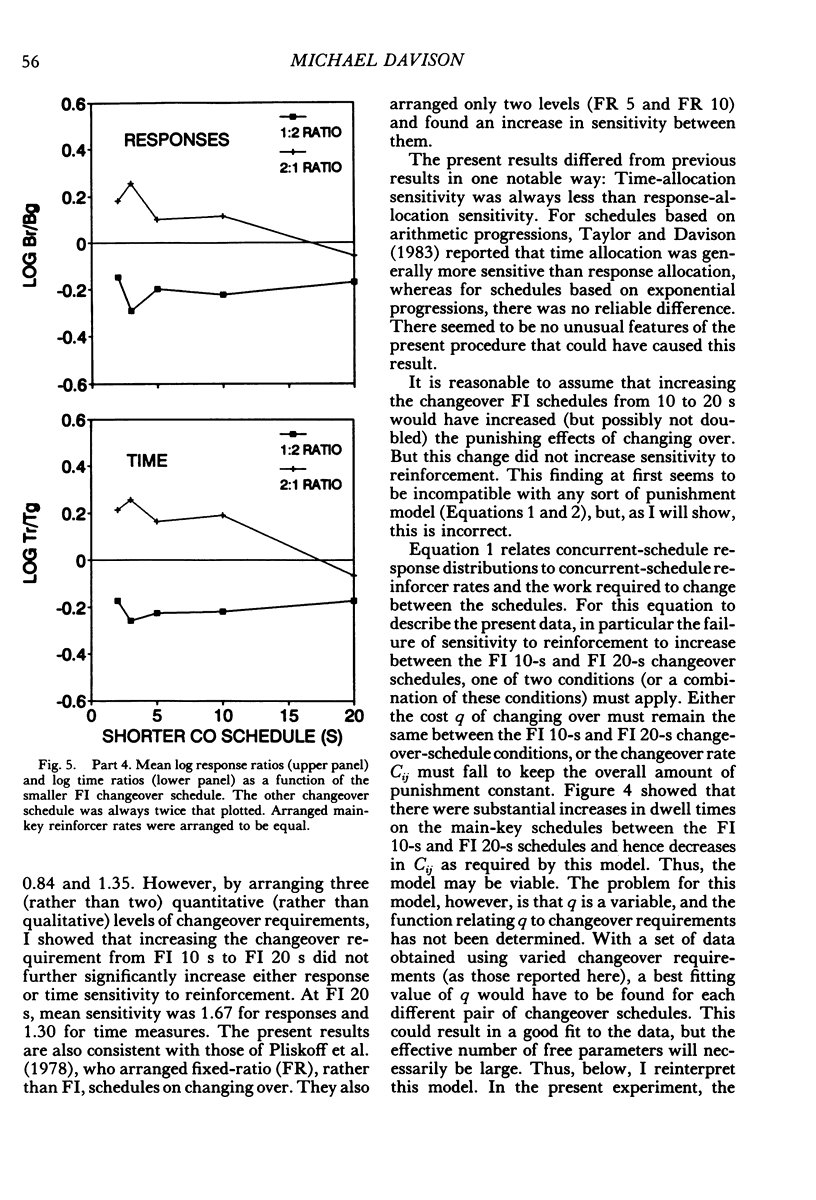
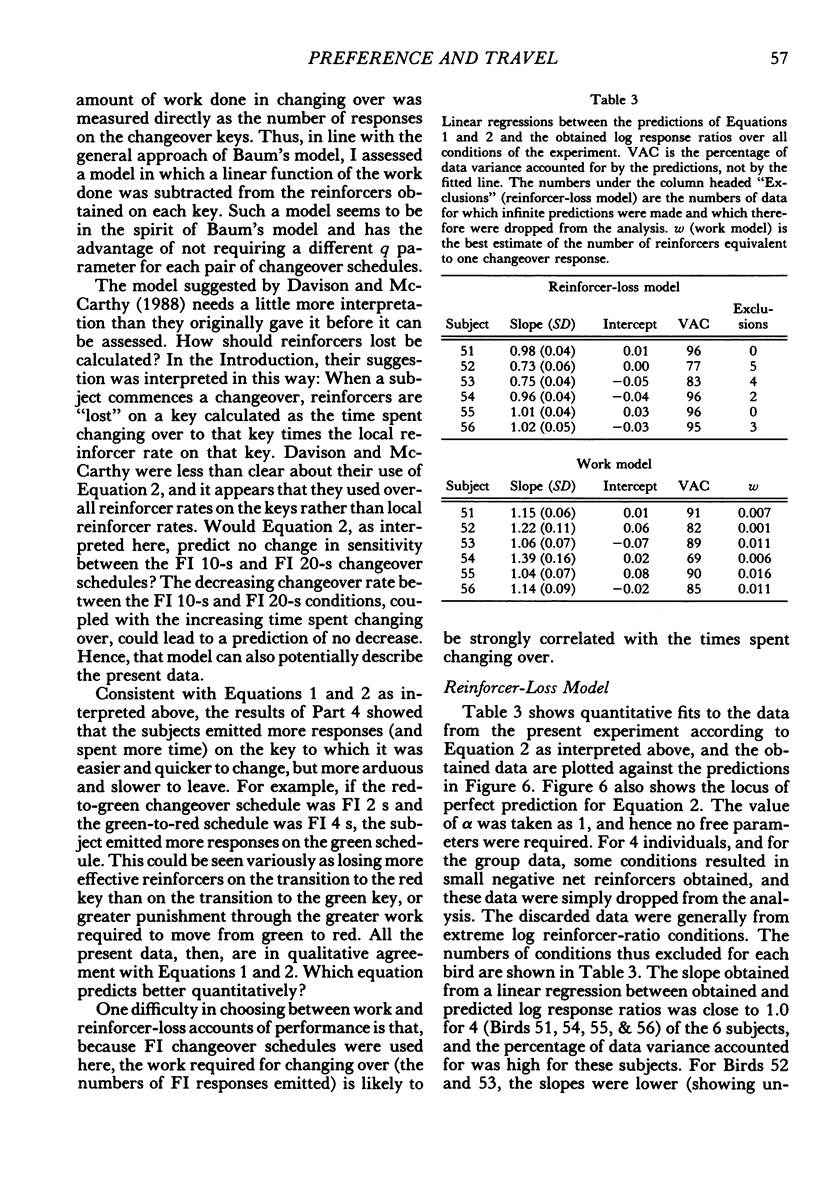
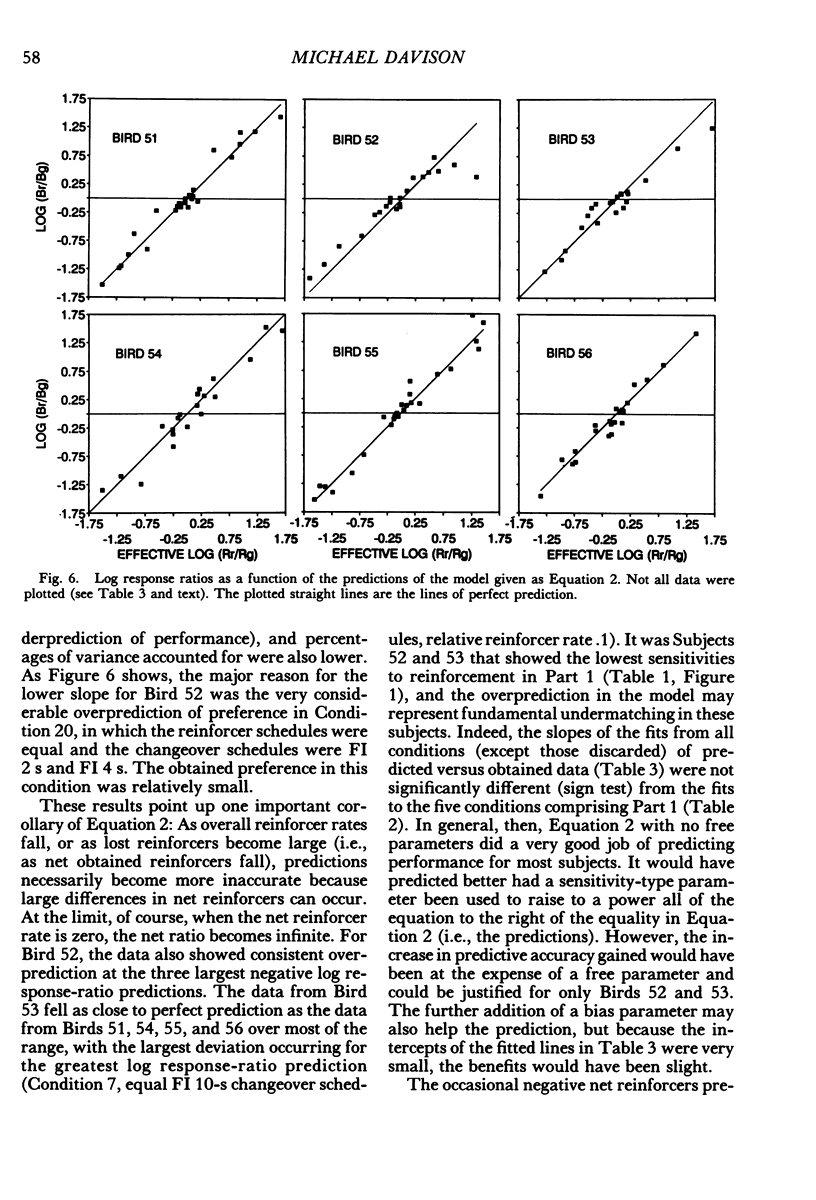
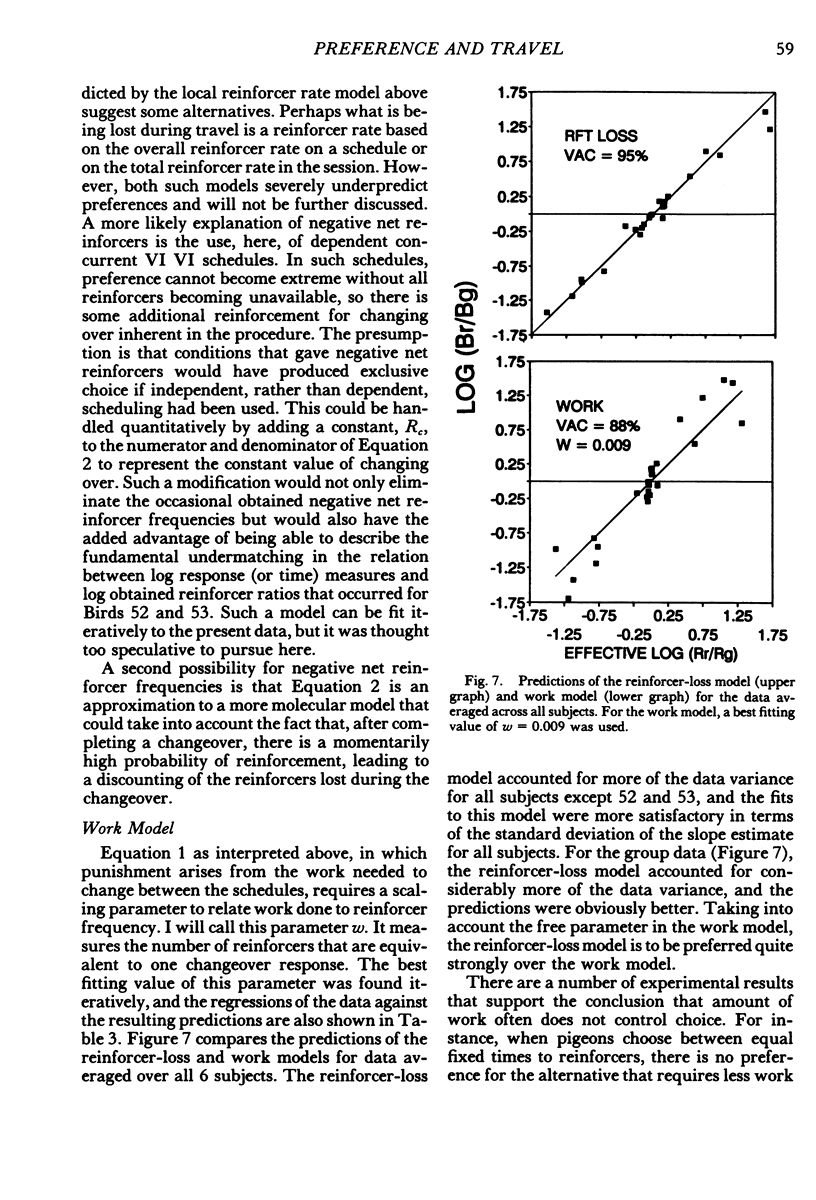
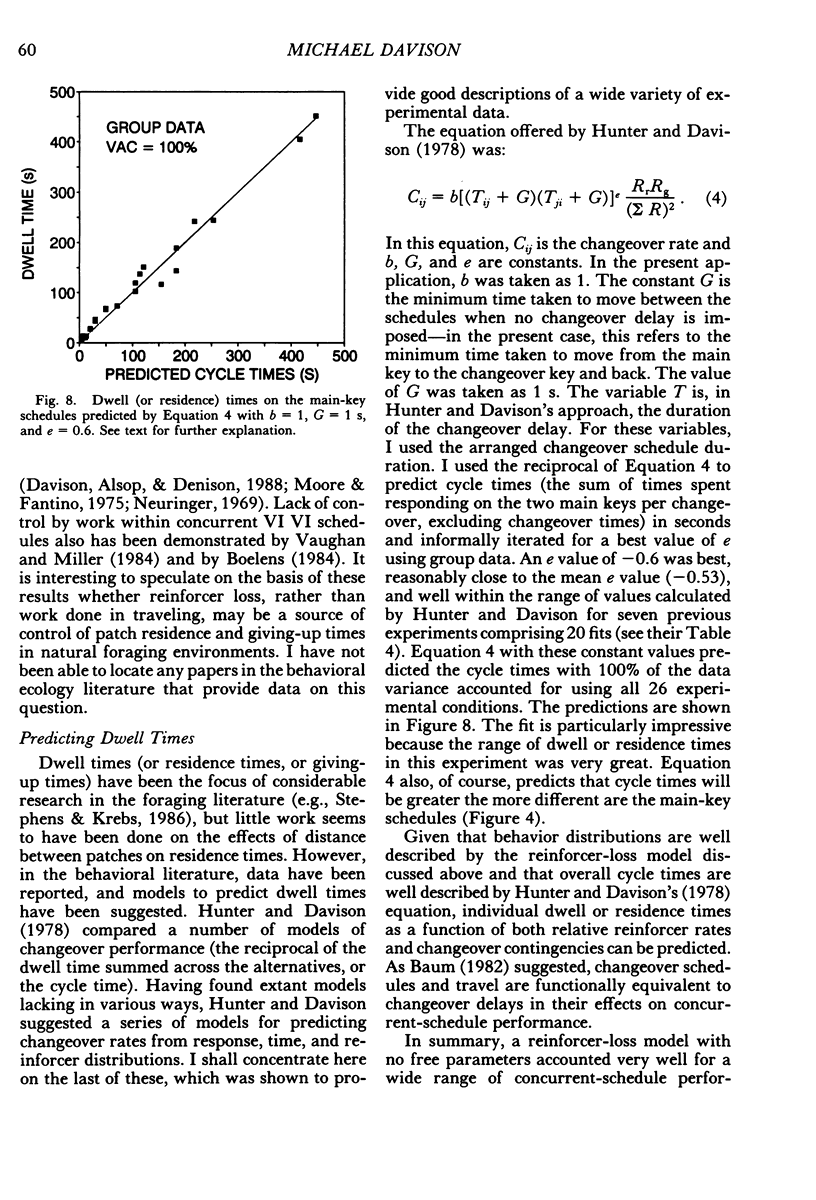
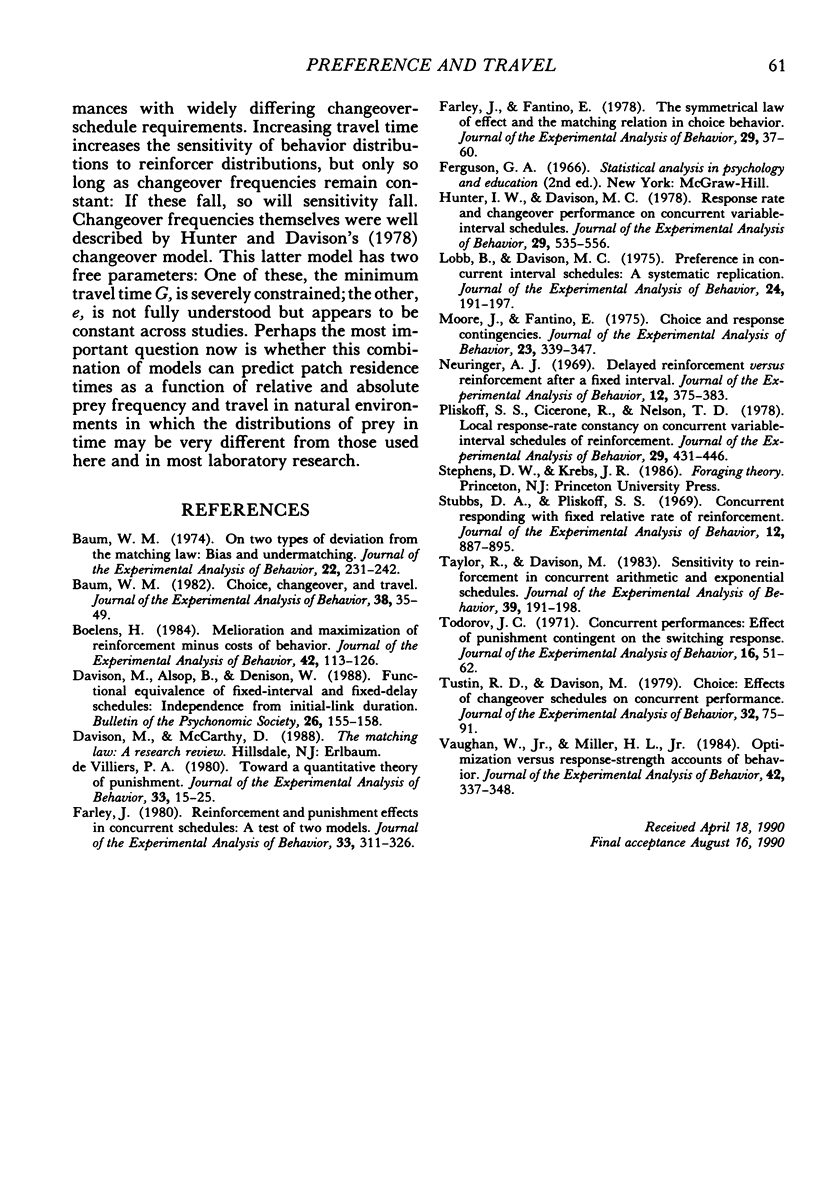
Selected References
These references are in PubMed. This may not be the complete list of references from this article.
- Baum W. M. Choice, changeover, and travel. J Exp Anal Behav. 1982 Jul;38(1):35–49. doi: 10.1901/jeab.1982.38-35. [DOI] [PMC free article] [PubMed] [Google Scholar]
- Baum W. M. On two types of deviation from the matching law: bias and undermatching. J Exp Anal Behav. 1974 Jul;22(1):231–242. doi: 10.1901/jeab.1974.22-231. [DOI] [PMC free article] [PubMed] [Google Scholar]
- Boelens H. Melloration and maximization of reinforcement minus costs of behavior. J Exp Anal Behav. 1984 Jul;42(1):113–126. doi: 10.1901/jeab.1984.42-113. [DOI] [PMC free article] [PubMed] [Google Scholar]
- Farley J., Fantino E. The symmetrical law of effect and the matching relation in choice behavior. J Exp Anal Behav. 1978 Jan;29(1):37–60. doi: 10.1901/jeab.1978.29-37. [DOI] [PMC free article] [PubMed] [Google Scholar]
- Farley J. Reinforcement and punishment effects in concurrent schedules: A test of two models. J Exp Anal Behav. 1980 May;33(3):311–326. doi: 10.1901/jeab.1980.33-311. [DOI] [PMC free article] [PubMed] [Google Scholar]
- Hunter I. W., Davison M. C. Response rate and changeover performance on concurrent variable-interval schedules. J Exp Anal Behav. 1978 May;29(3):535–556. doi: 10.1901/jeab.1978.29-535. [DOI] [PMC free article] [PubMed] [Google Scholar]
- Lobb B., Davison M. C. Performance in concurrent interval schedules: a systematic replication. J Exp Anal Behav. 1975 Sep;24(2):191–197. doi: 10.1901/jeab.1975.24-191. [DOI] [PMC free article] [PubMed] [Google Scholar]
- Moore J., Fantino E. Choice and response contingencies. J Exp Anal Behav. 1975 May;23(3):339–347. doi: 10.1901/jeab.1975.23-339. [DOI] [PMC free article] [PubMed] [Google Scholar]
- Neuringer A. J. Delayed reinforcement versus reinforcement after a fixed interval. J Exp Anal Behav. 1969 May;12(3):375–383. doi: 10.1901/jeab.1969.12-375. [DOI] [PMC free article] [PubMed] [Google Scholar]
- Pliskoff S. S., Cicerone R., Nelson T. D. Local response-rate constancy on concurrent variable-interval schedules of reinforcement. J Exp Anal Behav. 1978 May;29(3):431–446. doi: 10.1901/jeab.1978.29-431. [DOI] [PMC free article] [PubMed] [Google Scholar]
- Stubbs D. A., Pliskoff S. S. Concurrent responding with fixed relative rate of reinforcement. J Exp Anal Behav. 1969 Nov;12(6):887–895. doi: 10.1901/jeab.1969.12-887. [DOI] [PMC free article] [PubMed] [Google Scholar]
- Taylor R., Davison M. Sensitivity to reinforcement in concurrent arithmetic and exponential schedules. J Exp Anal Behav. 1983 Jan;39(1):191–198. doi: 10.1901/jeab.1983.39-191. [DOI] [PMC free article] [PubMed] [Google Scholar]
- Todorov J. C. Concurrent performances: effect of punishment contingent on the switching response. J Exp Anal Behav. 1971 Jul;16(1):51–62. doi: 10.1901/jeab.1971.16-51. [DOI] [PMC free article] [PubMed] [Google Scholar]
- Tustin R. D., Davison M. Choice: Effects of changeover schedules on concurrent performance. J Exp Anal Behav. 1979 Jul;32(1):75–91. doi: 10.1901/jeab.1979.32-75. [DOI] [PMC free article] [PubMed] [Google Scholar]
- Vaughan W., Jr, Miller H. L., Jr Optimization versus response-strength accounts of behavior. J Exp Anal Behav. 1984 Sep;42(2):337–348. doi: 10.1901/jeab.1984.42-337. [DOI] [PMC free article] [PubMed] [Google Scholar]
- de Villiers P. A. Toward a quantitative theory of punishment. J Exp Anal Behav. 1980 Jan;33(1):15–25. doi: 10.1901/jeab.1980.33-15. [DOI] [PMC free article] [PubMed] [Google Scholar]


